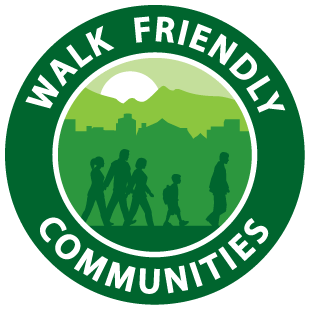- Of the 100 metro areas examined by Smart Growth America in their 2021 Dangerous by Design Report, Madison had a lower Pedestrian Danger Index score than all but one other metropolitan statistical area (MSA). This score reflects a much lower rate of pedestrian deaths per resident population that nearly every other large metro area in the United States.
- Despite a relatively low pedestrian fatality rate, Madison set a goal of eliminating traffic fatalities by 2030 under its Vision Zero initiative. Under this vision, the City is analyzing data and deploying safety countermeasures to high-risk locations, including speed reductions, crosswalk upgrades, and retiming traffic signals.
- According the American Communities Survey, nearly a third of commute trips in Madison are taken by a mode other than a personal motor vehicle, such as by foot, transit or bike.
- Madison supports its many pedestrian programs and initiatives with program staff and coordination between various departments to keep up momentum on walkability and safety activities. This includes a Pedestrian and Bicycle Administrator, a Pedestrian and Bicycle Outreach Coordinator, and an extensive staff under its crossing guard program and other encouragement/education activities. Its citywide plans are supplemented by nearly 30 neighborhood plans that bring attention to walkability and pedestrian safety at the neighborhood level.
- The City boasts strong planning and policy approaches to create safe, walkable streets. This includes requirements for pedestrian circulation between sidewalks and entrances to destinations, requirements for sidewalk widths, and progressive parking policies that help incentivize alternate modes of transportation.
- Madison has an extensive network of both sidewalks and trails to support multimodal travel throughout the City and County.
Madison, WI

Contact: Renee Callaway
recallaway@cityofmadison.com
recallaway@cityofmadison.com
